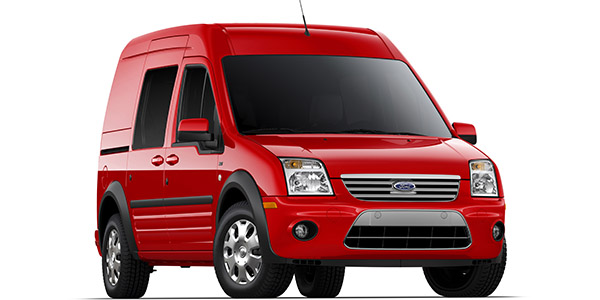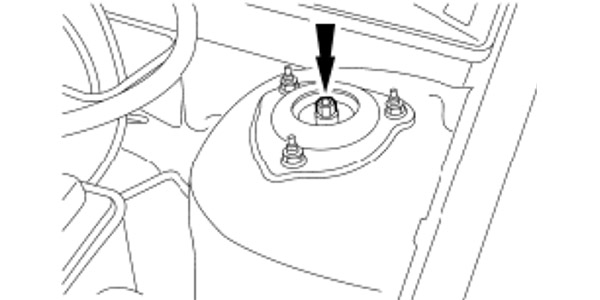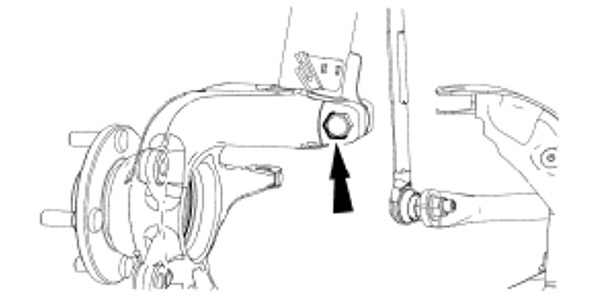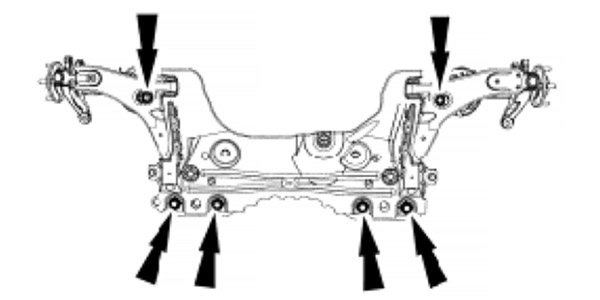
The Ford Transit Connect is, perhaps surprisingly, based on the Ford Focus. The front suspension is the same, but the rear uses an axle tube mounted on two leaf springs. The van has a cult following with taxi cab fleets, contractors and private owners.
Before you attempt to align a Transit Connect, try to understand how the customer uses the vehicle every day. Some contractors will overload their Transit Connect, which will cause changes in the ride height and front camber and caster. This will result in inner or outer edge tire wear.

Front Suspension
The front suspension utilizes a MacPherson strut system from the Focus. Like the Focus, there are minimal amounts of adjustment built in for camber and caster. If the van has a camber, caster or SAI angle that is significantly out of specifications, check for damage.
By loosening the strut rod nut and either pushing the strut inboard or pulling it outboard, the camber can be adjusted by approximately 0.25 degree. Tighten the nut to 45 ft./lbs. after the adjustment is complete. Ford recommends loosening the bolt that holds the strut to the knuckle to make the adjustment.
The subframe can be shifted for correct cross camber and caster angles. To do this, loosen the four subframe rear bolts and the two subframe front bolts approximately two or three turns.

Shifting the subframe toward the passenger side will increase the driver side camber and decrease the passenger’s side camber. Shifting the subframe towards the driver side will increase the passenger side camber and decrease the driver’s side camber. Shifting the subframe forward will increase the caster. Shifting the subframe rearward will decrease the caster.
Tightening the subframe bolts in the correct sequence will minimize subframe shifting.
Tighten the six subframe bolts in the following sequence:
- Tighten the two rearward outboard bolts to 148 ft./lbs.
- Tighten the two forward bolts to 92 ft./lbs.
- Tighten the two rearward inboard bolts to 148 ft./lbs.
- Check and adjust the front toe. If equipped with Ford’s Advance Track and Roll Stability Control (RSC), calibrate the ABS module for the steering angle sensor. Follow the scan tool directions.
The more straightforward method to change the camber and caster is to use an adjustable upper strut mount. The mount can adjust the camber or caster by ±1.0. While the cost of the adjustable upper strut mount may seem expensive, it will give adjustability for the remainder of the life of the van. The kit will also save the labor costs of shifting the subframe.

Rear Suspension
The rear suspension system utilizes a steel tube axle supported by semi-elliptic, leaf-type springs and shock absorbers. The leaf springs are secured to the body at two mounting points.
To adjust the camber or toe, a shim can be inserted between the spindle and axle. The shim can be trimmed to give ±1.5 degrees of camber or toe.













